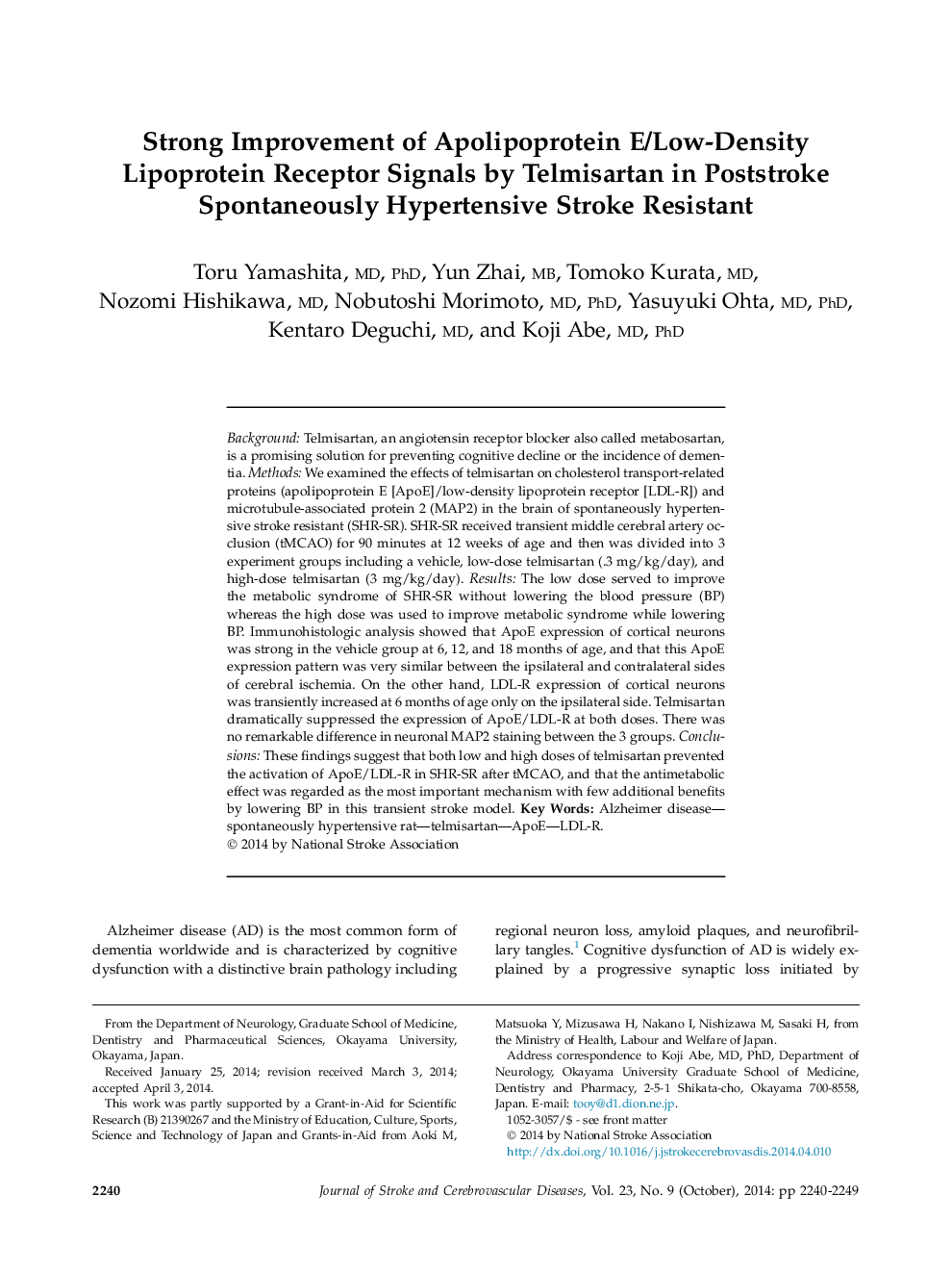| کد مقاله | کد نشریه | سال انتشار | مقاله انگلیسی | نسخه تمام متن |
|---|---|---|---|---|
| 2702487 | 1144540 | 2014 | 10 صفحه PDF | دانلود رایگان |

BackgroundTelmisartan, an angiotensin receptor blocker also called metabosartan, is a promising solution for preventing cognitive decline or the incidence of dementia.MethodsWe examined the effects of telmisartan on cholesterol transport-related proteins (apolipoprotein E [ApoE]/low-density lipoprotein receptor [LDL-R]) and microtubule-associated protein 2 (MAP2) in the brain of spontaneously hypertensive stroke resistant (SHR-SR). SHR-SR received transient middle cerebral artery occlusion (tMCAO) for 90 minutes at 12 weeks of age and then was divided into 3 experiment groups including a vehicle, low-dose telmisartan (.3 mg/kg/day), and high-dose telmisartan (3 mg/kg/day).ResultsThe low dose served to improve the metabolic syndrome of SHR-SR without lowering the blood pressure (BP) whereas the high dose was used to improve metabolic syndrome while lowering BP. Immunohistologic analysis showed that ApoE expression of cortical neurons was strong in the vehicle group at 6, 12, and 18 months of age, and that this ApoE expression pattern was very similar between the ipsilateral and contralateral sides of cerebral ischemia. On the other hand, LDL-R expression of cortical neurons was transiently increased at 6 months of age only on the ipsilateral side. Telmisartan dramatically suppressed the expression of ApoE/LDL-R at both doses. There was no remarkable difference in neuronal MAP2 staining between the 3 groups.ConclusionsThese findings suggest that both low and high doses of telmisartan prevented the activation of ApoE/LDL-R in SHR-SR after tMCAO, and that the antimetabolic effect was regarded as the most important mechanism with few additional benefits by lowering BP in this transient stroke model.
Journal: Journal of Stroke and Cerebrovascular Diseases - Volume 23, Issue 9, October 2014, Pages 2240–2249